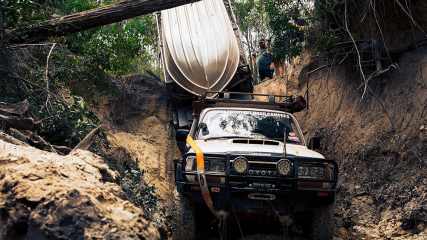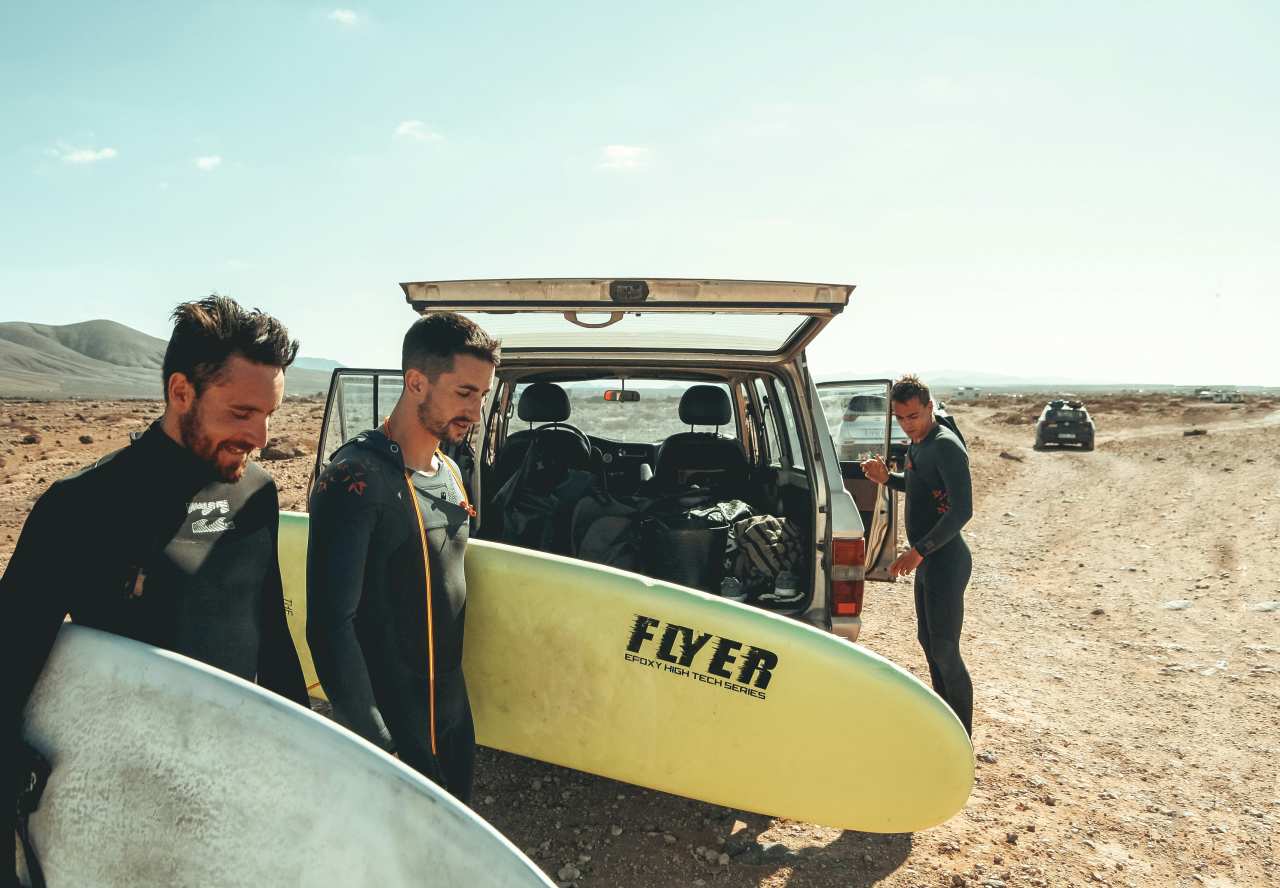Dual battery systems: Everything you need to know
By Marcus Craft · 24 Apr 2025
When you’re on a vehicle-based camping trip, auxiliary power is crucial. A dual battery system – two separate batteries working in conjunction with each other but for different purposes – ensures your vehicle has start-up power and your campsite has consistent reliable power, sourced from the vehicle.A second battery, as part of a correctly wired and properly functioning system, will make sure you're able to start up your vehicle with your original battery and, using your second battery, you’ll also be able to optimise available power at camp and minimise any risk of running out of power while using your fridge, lights and any other camp accessories.To understand what a dual battery setup is and to find out which is the best system for your Toyota Landcruiser, Ford Ranger, VW Amarok, Isuzu D-Max or MU-X, Mitsubishi Triton, or just about anything, read on.A dual battery simply describes a battery system with a second or auxiliary battery that has been installed in addition to the vehicle’s original factory-fitted battery. The second battery is usually placed in a dedicated space on a purpose-built tray in a vehicle’s engine bay, cabin, rear-most load space, or in the tray (if the vehicle is a ute).Well, that depends on the system you’re having installed and whether you’re installing the set-up yourself (which is not recommended unless you’re very handy with the tools), or how much the mob doing the work for you charges for the dual battery system itself and the labour to fit it to your vehicle.Often it’s smarter to have a professional do it because if anything is incorrectly wired there's an increased risk of an electrical fire in the vehicle.As a guideline, expect to pay upwards of $2500 for the whole kit and caboodle to be fitted – that price includes approximately $1700 for the kit itself and anywhere up to $900 or more for 'Charge to fit product to vehicle' and any 'additional fit charge'.The aim of the extra power supply is to provide your campsite with readily available and consistent power, while not draining your main battery. Usually, a dual battery setup for a fridge prompts a 4WD tourer’s first foray into the realm of auxiliary power because keeping your food (and beers!) cold in a portable fridge is an integral factor in any happy trip away.A dual battery setup involves more than just installing a second battery, though. The two batteries – your vehicle’s starting battery and your auxiliary battery – are two separate, isolated systems.Your vehicle’s battery and alternator (the latter charging both batteries) are responsible for powering all vehicle-based gear while the engine is running; your second battery is responsible for powering all other camp-based gear, such as your 12V portable fridge, lights, laptops, inverters etc, when you are stopped and the ignition is turned off.A real-world dual battery setup includes a dual battery isolator, a dual battery monitor, all the necessary wiring and more. A dual battery isolator ensures that the two batteries are charged in order to keep the two power supplies topped up and working.A dual battery monitor, which allows the user to monitor voltage levels on both batteries just by checking an in-cabin read-out, is also key to maintaining convenient awareness and electronic control over the dual battery system at all times.There are plenty of dual battery setups available – including the Redarc dual battery system – and other reputable Aussie companies, such as Ironman 4x4, ARB and Projecta, are known for making top-quality electrical systems and battery-related products.Please note: An OME twin start-up battery setup – in which both batteries are intended as start-up batteries only – is not a dual-battery system, but the wiring can be sorted out to suit that system.This may be best left to the professionals but if you’re decent with the tools and know your way around a vehicle – and can get your head around a dual battery wiring diagram – then by all means give a dual battery installation a whirl.First, you need space enough for dual battery kit – either in your engine bay, in the cabin of your vehicle or in the tray (if you have a ute).A large deep-cycle battery needs a strong support and that’s usually in the form of a 3.0mm powder-coated steel tray on which the second battery will sit.Note: If your dual battery is positioned in a tub or load space, it can be fitted into a laser-cut, folded and welded dual battery box.That tray should be built to absorb hard-core off-roading punishment in order to protect the battery. If you’ve ever peeked under the bonnet of an outback touring Hilux and had a gander at its dual battery tray, or check out a Ford Ranger dual battery, you’ll have the right idea.Make sure you position your second battery well away from any heat sources, e.g. engine components that will become hot during long-distance trips etc.As for wiring and switchgear, in simple terms, a manual four-way switching approach relies on the user to dictate the battery system’s operational status: either its duty is to start the vehicle or to maintain power to the campsite. This system’s switch can be moved to a position where both batteries are being charged.Automatic solenoid switching – by way of a solenoid attached to your off-roader’s ignition wiring – will ensure the auxiliary battery is disconnected from the main battery when you turn off the vehicle’s engine and, when engine is switched back on, it is reconnected to the engine and recharged.Check at Aussie companies, such as Ironman 4x4, ARB, Redarc, Piranha and the like, for the best electrical system support set-ups around. You can buy the gear from them and do the work yourself or have them install it for you.For off-road touring, camping and caravanning, deep-cycle batteries are your best bet. There are several types of deep cycle batteries but AGM (Absorbed Glass Mat) examples are considered the best and most versatile for fitment and use in off-roaders.Your choice of the best options for different scenarios/vehicle types hinges on how much power you will need to draw on at your campsite.Tourers nowadays often opt for a combination of auxiliary battery power and the use of solar panels or mats, rather than only relying on onboard batteries.Solar panels or flexible mats provide a great source of auxiliary power, but alone are no substitute for a comprehensive top-quality dual battery kit – all of these bits of equipment should be considered as parts of the power-supply puzzle and used in conjunction with each other.Also, check out a portable power pack as a handy power source, an adjunct to your main power supplies.So, how much will a dual battery setup cost? A deep-cycle battery alone can cost from $216 (for a 32AH 12V AGM deep cycle battery); and a dual-battery system is likely to set you back at least $900 (fitted) or more, depending on parts requested/used, wiring complexity, labour costs etc.Be aware that the second battery, its tray – no matter how robust it is – and the battery’s wiring and related electrical system may suffer damage due to engine bay heat, extreme temperatures, the violent repeated vibrations of outback corrugations, water, dirt or mud ingress and more.The rough nature of off-roading dictates that you should spend as much as your budget allows on the best quality gear you can find in order to enjoy your bush and beach adventures without fear of power failure.The best dual battery system for your 4x4 will be the one that suits your vehicle and your intended purpose. To find top-quality dual battery kits, visit one of Australia’s great aftermarket stores or stockists including, but not limited to, Ironman 4x4, TJM, ARB, Redarc and Piranha.

.jpg)
.jpg)
.jpg)

.jpg)
.jpg)

.jpg)
